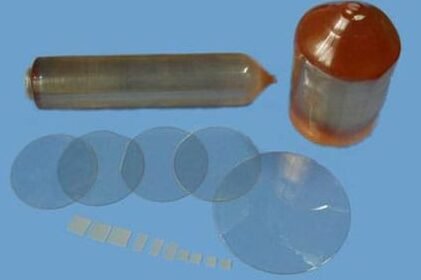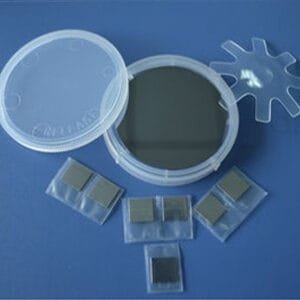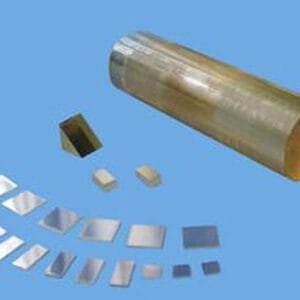Lanthanum Aluminate Substrate (LaAlO₃)
Lanthanum Aluminate (LaAlO₃) is a high-performance single crystal substrate widely used in industrial applications and the production of high-temperature superconducting thin films. Manufactured using the Czochralski growth method, it offers large single crystals up to 2 inches in diameter or larger. Its compatibility with YBaCuO high-temperature superconducting thin films, along with its low dielectric constant and minimal microwave loss, makes it essential for advanced microwave electronic devices.
Key Physical Properties
| Property | Value |
|---|---|
| Material | LaAlO₃ |
| Crystal System | Hexagonal (at room temperature); Cubic (>435℃) |
| Lattice (Å) | Hexagonal a=5.3575, c=13.22; Cubic a=3.821 |
| Growth Method | Czochralski |
| Hardness | 6-6.5 (Mohs) |
| Melting Point | 2080℃ |
| Density | 6.52 g/cm³ |
| Thermal Expansion | 9.4 (x 10⁻⁶/℃) |
| Permittivity | ε = 21 |
| Loss Tangent (10 GHz) | ~ 3 × 10⁻⁴ @ 300 K, ~ 0.6 × 10⁻⁴ @ 77 K |
| Color and Appearance | Brown-yellow to brown polished with natural twinned domains (based on annealing conditions) |
| Chemical Stability | Insoluble in mineral acid at room temperature; soluble in H₃PO₄ at temperatures above 150℃ |
| Key Feature | Ideal for microwave electronics |
Specifications
- Size: 10×3 mm, 10×5 mm, 10×10 mm, 15×15 mm, 20×20 mm, Dia 15 mm, Dia 20 mm, Dia 1”, Dia 2”, Dia 2.6”
- Thickness: 0.5 mm, 1.0 mm
- Polishing: SSP or DSP
- Orientation: <100>, <110>, <111>
- Redirection Precision: ±0.5°
- Edge Redirection: 2° (special 1° available)
- Angle of Crystalline: Custom sizes and orientations available
- Surface Roughness (Ra): ≤5Å (5µm × 5µm)
Packaging Details
TFM ensures that Lanthanum Aluminate substrates are packaged in class 100 clean bags or wafer containers within a class 1000 clean room to maintain product integrity and quality.
Explore premium-quality Lanthanum Aluminate Substrates (LaAlO₃) from TFM for cutting-edge industrial and electronic applications.





Reviews
There are no reviews yet.